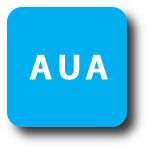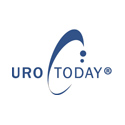ORLANDO, FL USA (UroToday.com) - The rationale for neoadjuvant therapy (NAT) in high-risk prostate cancer (HRPC) is the same as the rationale for any disease for which NAT is used, to optimize local control and treat micrometastases. Androgen deprivation therapy (ADT) in conjunction with radiation improves overall and cancer-specific surgery, so a precedence has been set for prostate cancer patients. However, there is no biological rationale for synergy between ADT and surgery like there is for ADT and radiation.
 He then went on to show that NAT with ADT has been tried before but has not really resulted in positive outcomes in terms of long-term cancer control, although some near-term outcomes, such as downstaging, may have occurred. He posited that the lack of positive findings might be due to lack of complete AR blockade based on tissue androgen levels and showed data supporting this idea from clinical samples from patients treated with ADT as a NAT. The Taplin neoadjuvant abiraterone study has so far shown the lowest tissue androgen level, but as Dr. Montgomery pointed out, the level is still high enough to activate AR.
He then went on to show that NAT with ADT has been tried before but has not really resulted in positive outcomes in terms of long-term cancer control, although some near-term outcomes, such as downstaging, may have occurred. He posited that the lack of positive findings might be due to lack of complete AR blockade based on tissue androgen levels and showed data supporting this idea from clinical samples from patients treated with ADT as a NAT. The Taplin neoadjuvant abiraterone study has so far shown the lowest tissue androgen level, but as Dr. Montgomery pointed out, the level is still high enough to activate AR.
He ended by suggesting that combination of ADT and other targeted therapy might provide the basis of further studies. He listed such trials including the PUNCH trial and enzalutamide/abiraterone combination NAT.
Presented by Robert Bruce Montgomery, MD at the American Urological Association (AUA) Annual Meeting - May 16 - 21, 2014 - Orlando, Florida USA
Seattle Cancer Care Alliance, Seattle, WA USA
Written by Phillip Abbosh, MD, PhD, medical writer for UroToday.com


